Should I Defoliate My Cannabis Plants?
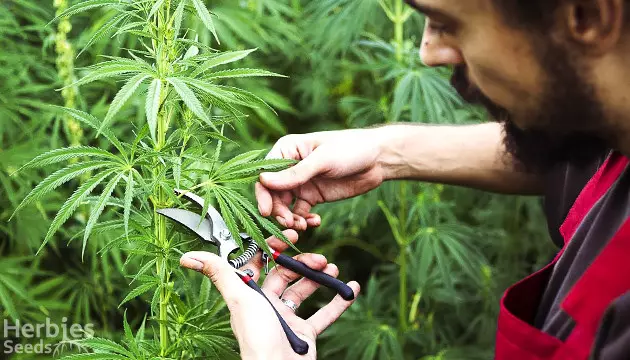
We all need a haircut sometimes. The same is true of cannabis plants. If you leave a plant to its own devices, it’ll grow more leaves and branches than it needs. While it may seem counter-intuitive, sometimes removing leaves and branches can actually boost the yield of your plants. This technique, called defoliation, is a high-risk, high-reward option for experienced cannabis growers.
Defoliation – What Is It?
Defoliation, also called deleafing, involves removing parts of a cannabis plant in order to encourage new growth. In some professional grows in legal states, employees will spend their entire days defoliating a garden. However, this can be a fairly polarizing technique – some growers love it, others loathe it. Detractors say that it’s a waste of time and can actually hurt your plants. However, when used correctly, defoliation can help you boost your yield, prevent disease and grow better quality cannabis – we’ll tell you how.
Why Is Defoliation Helpful?
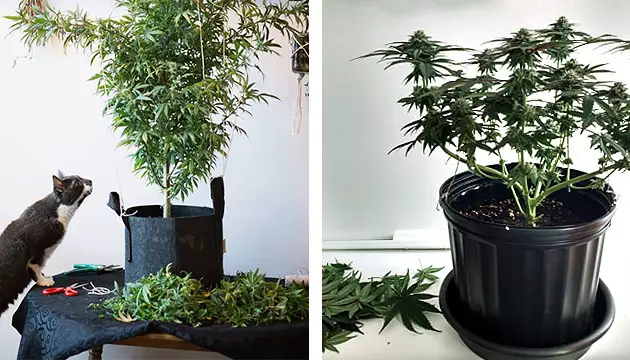
Removing plant matter can have several positive effects on a cannabis garden. First, it will help plants focus their energy on new growth. Second, defoliation allows more light to penetrate your canopy. Third, it promotes airflow and prevents disease.
Defoliation During The Vegetative Stage
You should do most of your defoliation during your plant’s vegetative cycle. When a plant is vegging, it’s young and robust, and therefore has the stamina it needs to overcome stressful situations like defoliation. As a result, defoliating during veg will ensure that your plants have time to recover before you switch them into flower. In addition, defoliation will improve airflow and light penetration in your garden. These changes affect the overall health of a plant. By defoliating early, you can prevent a slew of diseases and infestations from taking root that might otherwise rear their ugly heads during the flowering phase.
Defoliation During The Flowering Stage
You’re not done yet! Defoliating during flowering is just as important as it is during veg. Defoliation changes the way in which plants grow by causing them to release growth hormones. Instead of using energy to create leaves, that power will go into forming large, dense buds. In addition, defoliation during flowering serves the same purposes as it does during veg: ensuring that your plant gets proper light penetration and airflow. You can actually see the difference between buds that received direct light during flowering and ones that didn’t. Buds in direct light will be a healthier shade of green, while those in shade will have a lime-green color.
But Wait – Isn’t Defoliation Risky?
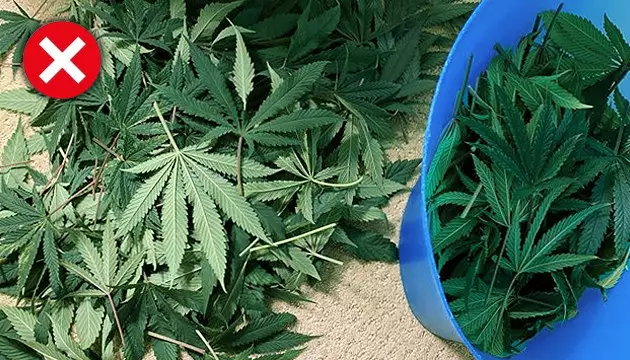
There are plenty of growers who denounce defoliation as a risky maneuver – and they’re not entirely wrong. If you don’t know what you’re doing, defoliation can cause serious damage to your garden.
One common mistake among inexperienced growers is removing too much foliage at once. While strategic defoliation can kickstart your plant’s growth and improve overall health, overdoing it can have the opposite effect. If you take off too many bud sites early in the plant’s life cycle, you risk significantly reducing yields.
Additionally, defoliating plants that are already weak or unhealthy can make their condition even worse. Removing foliage is a form of stress for cannabis, and excessive defoliation can push a vulnerable plant into hermaphroditism. Once that happens, it will stop producing THC-rich buds – and your harvest could be ruined.
However, when done carefully and at the right time, defoliation can be an effective technique without triggering any of these negative outcomes. Keep reading to learn when and how to defoliate properly while causing the least amount of stress to your plants.
Defoliation During Veg – Best Practices
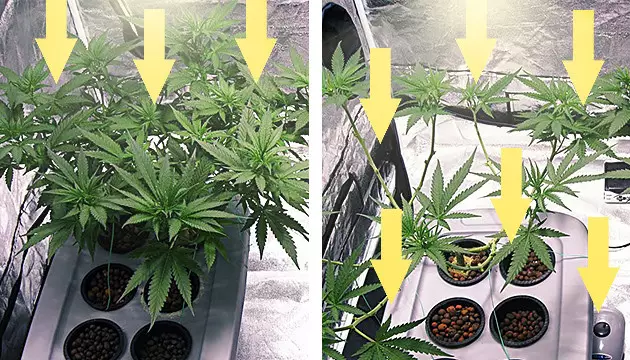
Before you start defoliating, you need to know how to do so properly. You can’t just go cutting off parts of your plant willy-nilly. Instead, you should approach marijuana defoliation systematically. Knowing when to remove plant matter and how much to defoliate are the two keys to success. With a little practice, this will become second nature.
When Should I Start?
You can start defoliation as soon as your plant has taken root. Before you try though, you should give your plant a checkup to make sure it’s already healthy – defoliating a sick plant can quickly turn it into a dead plant. In addition, ensure that your plant has been watered recently. It’ll need as much energy as it can get to heal itself after defoliation. A common practice is to remove the lower branches a few days before you switch your plants from veg into flower. Wait a day or two, then flip into flower.
What Should I Cut Off?
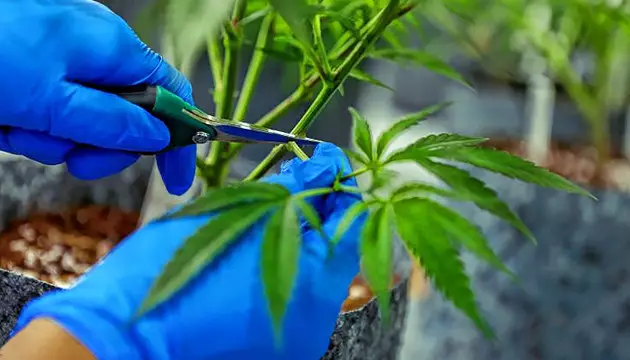
The whole point of defoliating in veg is to set your plants up for success in their flowering stage. The first thing you’ll want to do is remove the plant’s lower branches. Anything that touches the surface of your medium needs to go. After that, you can remove any branches that don’t reach up into your canopy. These low-hanging nodes will never receive the light they need to fully mature. Instead, they’ll only drain energy from your plant. Don’t let that happen – cut them off, don’t be shy! You want to remove the branches from the bottom 20% of the plant. Some growers call this technique “lollipopping”. Once you have a nice, defined canopy, you can work on removing leaves. Get rid of any leaves that are blocking nodes from direct light. Don’t overdo it, though! Leaves are like little solar panels for cannabis plants and help produce energy. You’ll want to make sure that your plants still have some leaves to help power their growth.
Defoliation During Flower – Doing It Right
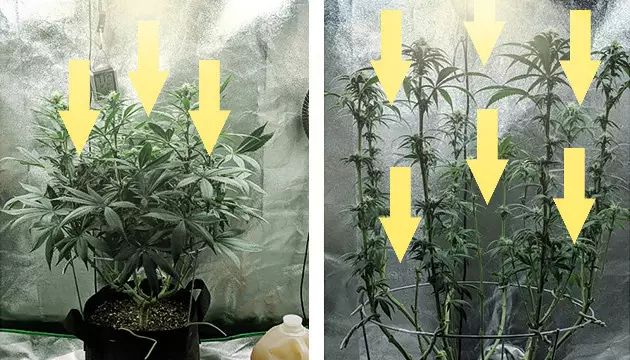
Even after your plant enters the flower cycle, removing leaves can be beneficial. While defoliating in veg is a great way to boost your plant’s growth, doing it during flowering is a way to maintain bud quality. Defoliating during this stage will help you reduce larf (low-hanging fluffy buds that aren’t viable) and improve yields. Defoliation is also helpful for autoflower strains, as time is such a crucial resource with these plants.
When Should I Start?
Once in the flowering cycle, you’ll need to stick to a schedule. This timetable will maximize the benefits defoliation has on your plants. Once your plants are three weeks into flower, perform another defoliation. At this point, focus only on leaves, not bud sites. This will likely be your last major deleafing in the plant’s life cycle. From now on, you should only remove leaves if they’re directly covering buds or nodes. Make sure that your nugs are in direct light!
What Should I Cut Off?
When defoliating in the flower phase, keep lollipopping to a minimum. At this point, you don’t want to remove any bud sites. Instead, focus on removing fan leaves (leaves attached to the plant with a long stem). If a fan leaf is covering a bud site, cut it off to ensure proper light penetration through your canopy. There are two techniques you can use when removing leaves. First, you can cut the leaf off with pruning shears. Make sure to cut the leaf as close to the plant’s main stem as possible. In contrast, you can simply pull the leaf downwards to remove it. It’ll detach from the main stalk with a satisfying pop. These two techniques help minimize the possibility of infections getting into your plant during defoliation.
How To Tell If Defoliation Was Successful
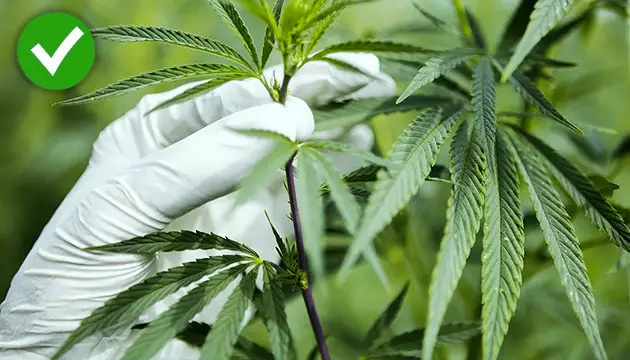
After you defoliate your plants, you may notice the leaf tips turning bright neon green. This occurs when the plants’ nutrient balance is temporarily disrupted due to pruning. In addition, the leaf stems may take on a purplish hue – a common stress response indicating that the plant has experienced damage. Fortunately, both of these symptoms are typically short-lived and should fade within a few days. Your plants will soon return to their healthy, vibrant green color.
How To Tell If Defoliation Failed – And What To Do
If you remove too much plant matter, you may damage your plant beyond repair. In addition, over-defoliating releases stress hormones, which may lead to a plant herming. If you notice that your plants don’t recover after a few days, you might be in trouble. At this point, you need to ensure that all of your ambient environmental conditions are dialed in. Proper humidity, temperature and light can help plants recover. In addition, make sure that your plants are getting enough nutrients, especially nitrogen – they’ll need it in order to recover.
Ready To Start?
Now that you know proper defoliation techniques and the effects it has on your plants, you’re ready to apply it to your own garden. Defoliation, more than any other aspect of growing, is both a science and an art form – it’ll take practice in order to master it. But once you do, your garden will thank you!
Herbies Head Shop expressly refuses to support the use, production, or supply of illegal substances. For more details read our Legal Disclaimer.
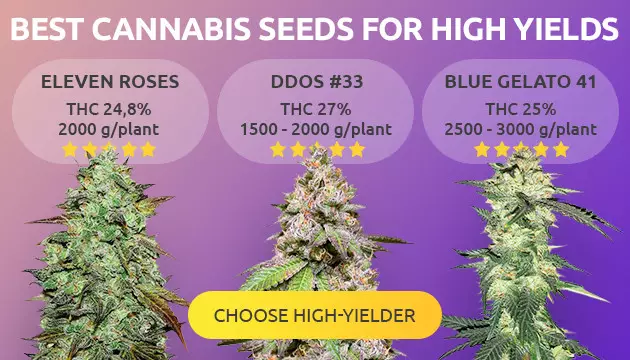
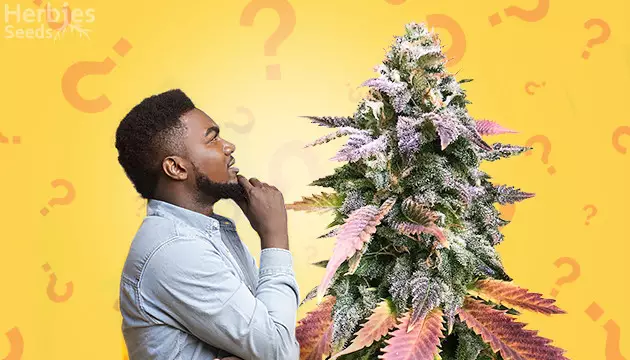


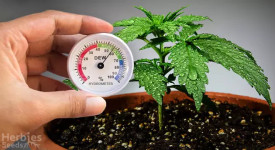
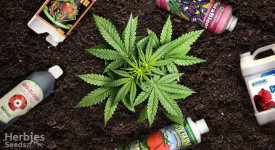
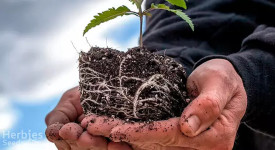


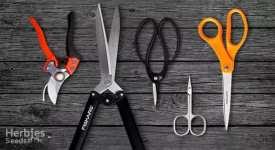
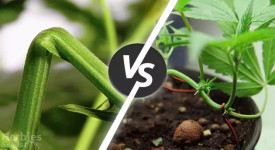
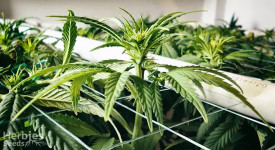

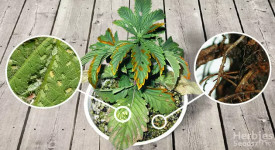
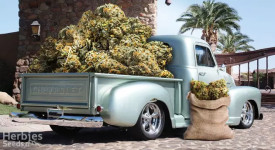
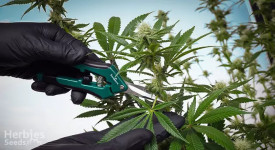

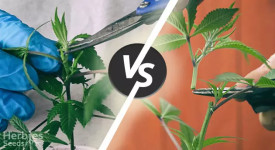
Thank you for leaving a comment for us!
Your feedback will be posted shortly after our moderator checks it.
Please note that we don’t publish reviews that: